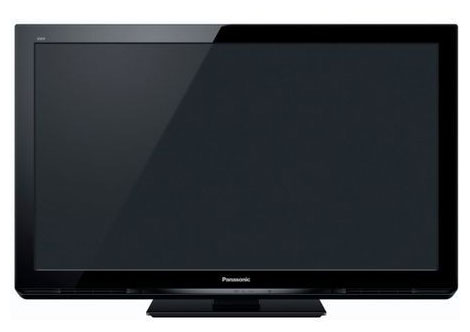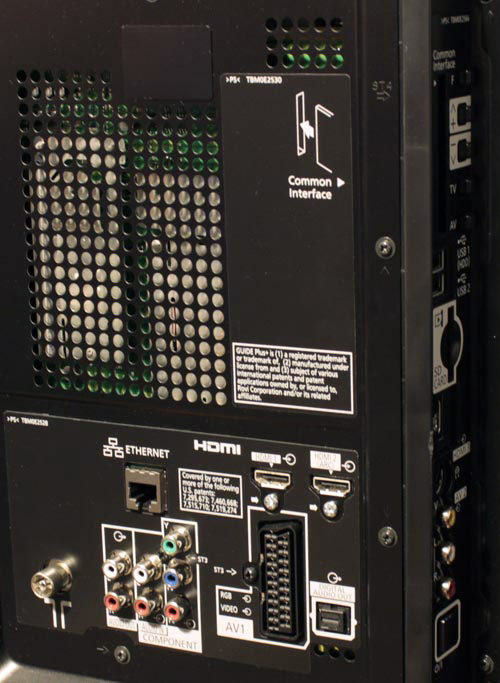Tucked away near the bottom of the Panasonic 2011 range is the S30 series, a collection of comparatively affordable Plasma TVs, which, in the UK and other European countries, are available in the 42″ and 50″ screen sizes. We’ve had a sample of the 42-inch Panasonic TX-P42S30B for a while now, and have put it through our usual barrage of tests. We were very happy with last year’s S-Series (the S20 Plasmas), since they offered excellent dark-room contrast performance, and were absolutely wonderful for gaming thanks to the fact that they featured nearly no fun-killing input lag.
<!-- google_ad_client = 'pub-2887677957235196'; google_ad_slot = '4990177225'; google_ad_width = 336; google_ad_height = 280; //-->
On paper, the 2011 S30 range appears to be much the same, featuring three HDMI inputs (rather than the four available higher up in the range), a DVB-T2 tuner (which can be used to pick up terrestrial HDTV services such as the UK’s Freeview HD), and surprisingly at this price point, the VIERA Connect internet-enabled platform. Features such as image calibration controls, a satellite tuner, 3D support, and an advanced screen coating (for reducing picture wash-out in brighter rooms) are the omissions at this price point. Let’s see if the TX-P42S30 is a gem among cheap plasma TV deals…
Note: The specific model we reviewed was the Panasonic TX-P42S30B, which denotes the British 3-pin-plug version. While we did not test the larger, 50-inch TX-P50S30/ TX-P50S30B, there shouldn’t be any significant difference in picture performance given similar specifications.
There’s no mistaking the Panasonic TX-P42S30 for a high-end Plasma TV by look – it features a thick, glossy black bezel with slightly rigid edges, making it look more like one of the 2010 Panasonic televisions produced before the company shook up its TV designs. It’s also not as slim as the step-up G30 series, or the even slimmer 3D-capable displays, for that matter. Below the Panasonic logo, there’s a neat-looking bright grey highlight, which stops the TX-P42S30B appearing entirely gloss black.

It sits on top of a supplied, square, gloss black tabletop stand, which is easy to assemble. It’s as simple as screwing a sturdy metal pole-block into the stand, lowering the plasma panel onto the poles, and screwing it into place. This is a relief after Samsung’s ultra-slim Plasma HDTVs, which require the user to lay the panel flat and attach the stand vertically. As usual for Panasonic Plasma TVs, the S30 feels incredibly sturdy.
The TX-P42S30 has 3 HDMI inputs, which is one less than the step-up ranges. There’s also provision for SCART, Component, and Composite video sources. Since this isn’t an ultra-slim HDTV, these connections are made directly, without adapter cables. There’s an ethernet socket, which allows the Panasonic TX-P42S30B to be hooked up to the internet (there’s no wireless capability built in). On top of that, there’s two USB sockets, for connecting an optional wireless dongle, or storage devices.
Unlike the last budget TV we reviewed (from Samsung), the Panasonic S30 does feature a DVB-T2 (Freeview HD) tuner.
 |
| Rear: 3 x HDMI, Component, SCART, aerial, ethernet & audio outs |
The TX-P42S30B features no (user-accessible) calibration controls at all, meaning that users are more or less at the mercy of the image characteristics determined by Panasonic’s engineers. Fortunately, Panasonic features a “True Cinema” mode, which is designed to reproduce accurate, true-to-source pictures (and has been very successful in doing so in the past). The S30 only features basic adjustments such as Brightness, Contrast, Colour and Sharpness, although the [Advanced Settings] screen hides a [16:9 Overscan] option (we disabled it to see the whole picture), and an [Intelligent Frame Creation] option which we also left off. Why? We prefer the mild motion artefacts a Plasma television naturally produces over the digital motion estimation errors that such video processing adds, but the choice is up to the user.
![[Picture] menu](https://www.hdtvtest.co.uk/news/wp-content/uploads/2018/04/hdtv_Panasonic-TXP42S30_menu1.jpg) |
| [Picture] menus |
| Jump To: 1. DesignNext: Calibration3. Performance |
jQuery(document).ready(function($) { var toc = $("#tableofcontents").html(); $("#tablecontents").html(toc); });